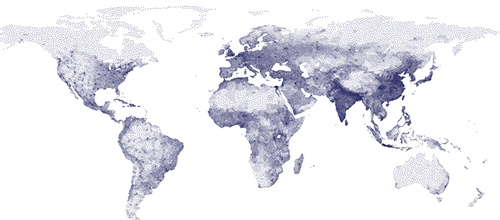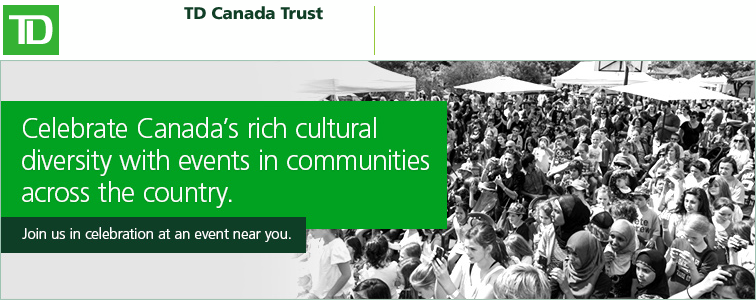Week 3.1 Social Forces
This week, we are interested in examining uncontrollable forces. Understanding these forces makes it easier to adapt to the changing market environment.
Environmental scanning is the process of continually acquiring information on events occurring outside the organization to identify potential trends. There are five forces that produce the environmental trends:
- Social
- Economic
- Technological
- Competitive
- Regulatory
The following figure shows these five forces and how they interact with the organization, its suppliers, and customers.
Environmental Forces. The five environmental forces are social, economic, technological, competitive, and regulatory.
©University of Waterloo
Environmental scanning helps us not only identify the potential trends but also determine why these trends are occurring.
The key to successful scanning includes:
- identifying trends,
- understanding the reasons behind the trends, and
- taking action to respond to such trends.
We will examine the environmental forces starting with social forces.
Social Forces
Social forces include the demographic characteristics of the population and its values. Demographics is the study of the characteristics of a human population such as population size, population growth rate, gender distribution, marital status, ethnicity, income distribution, etc.
Population size is in our interest because it shows the potential size of the market. The world population has been growing at faster rates in certain countries. The following table reveals how the size of the population is predicted to be distributed among ten countries in 2050. These ten countries will be the most populous countries by 2050.
| Country | Population (millions) | Cumulative % of World Population |
|---|
| India |
1705 |
18.8 |
|---|
| China |
1348 |
33.1 |
|---|
| Nigeria |
398 |
37.5 |
|---|
| USA |
388 |
41.8 |
|---|
| Indonesia |
322 |
45.0 |
|---|
| Pakistan |
309 |
48.0 |
|---|
| Brazil |
238 |
50.4 |
|---|
| Bangladesh |
202 |
52.5 |
|---|
| Democratic Republic of Congo |
195 |
54.2 |
|---|
| Philippines |
148 |
55.8 |
|---|

vinap/iStock/Getty Images
It is interesting to note that just ten countries will account for almost 56% of the world's population by 2050. This is an important piece of information, which has implications in marketing. If a company is serving these countries, its potential customers are more than half of the world’s population. Even if an organization does not serve all ten countries, the very large size of such countries as India and China means that they represent huge markets for many product categories. New economic progress in these countries will lead to growth in entrepreneurship.
Age structure is one of the factors included in demographics. There is a global trend created by shifting age structure where the number of people older than 65 will more than double in the coming decades, while the number of youth will grow at a much lower rate.
Stop and think question: From the perspective of marketing, what are the implications of the shifting age structure where the number of people older than 65 will more than double in the coming decades, while the number of youth will grow at a much lower rate? Think about your answer before revealing the answer.
Click to reveal answer.

amriphoto/E+/Getty Images
Elderly populations are in the life stage where they are not likely to save but start spending on their interests. They save less and spend their funds on health care, travel, and other retirement-related products and services. Companies in these industries target the elderly population: pharmaceutical companies, retirement housing providers, cruise ship organizers, etc.

LeoPatrizi/E+/Getty Images
In demographics, population growth rate plays an important role since it directly influences the potential size of the market. By 2020, the Canadian population is estimated to be 37 million; by 2050, it is expected to be 43 million. A trend we observe in Canada is that the Canadian population is growing older and more ethnically diverse. As in many developed countries, the birth rate is declining. We need labour to fuel our production. Due to a declining birth rate, the main source of population growth is immigration. Immigration increases diversity. Canada is proud of its diverse population.
In demographics, we need to mention generational cohorts. There are three generational cohorts with their own purchasing behaviours:
- Baby Boomers
- Generation X
- Generation Y (echo-boom or Millennials)
Baby Boomers
The term "baby boomers" refers to the generation born between 1946 and 1964. Some of the baby boomers are above 70 years old. As they have aged, their participation in the workforce and their earnings have increased, making them an important consumer market.
In the future, baby boomers' interests will reflect concern for their children and their grandchildren, and companies need to position products to respond to these interests. Generally, baby boomers are receptive to anything that makes them look and feel younger.
Example: Olay's Total Effects product line includes anti-aging moisturizers and cleansing cloths designed for this age group.
Olay North America. (2017, May 2). An Instant Boost from Olay Regenerist | Olay. [Video]. YouTube. https://www.youtube.com/watch?v=RQA3sKKC5nA
This age group is also starting to experience health problems related to aging, which creates a heated war for market share among drug companies.
Generation X

golero/E+/Getty Images
Generation X consists of people born between 1965 and 1976. During this time period, the number of children born each year declined. For that reason, this period is also known as the "baby bust."
People in Generation X are self-reliant, entrepreneurial, supportive of ethnic diversity, and better educated than any previous generation. There is data supporting the fact that Generation Xers are saving, planning for retirement, and taking advantage of retirement plans much earlier than did the baby boomer generation. As mentioned above, baby boomers are at the age of becoming grandparents. On the other hand, Generation X is the new parent market.
Generation Y

PeopleImages/E+/Getty Images
Generation Y is also known as echo-boom or Millennials. This generation includes those born between 1977 and 1994. This was a period of increasing births. Some characteristics of Generation Y are the following: Generation Y exerts influence on music, sports, computers, video games, and especially wireless phones.
Wireless communication is something Generation Y values highly. Online messaging tools and texting are known as a lifeline to friends and family. This generation has been the first to use text messaging extensively, wireless phone games, and built-in cameras. Other generations such as baby boomers know how life was without these types of gadgets. It is hard to imagine life without wireless connectivity for Generation Y. Currently, Gen Y make up over 25% of the Canadian population, making them a very important consumer group.
The reason why we are interested in generational cohorts is because the members of each generation carry distinctive attitudes in their consumer behavior. Marketers have been studying the cohorts in order to develop generational marketing programs for them, which would allow businesses to satisfy the needs of each generation in the best way possible while making economic profit.
There is more to examine in demographics. We will consider Canadian family structure, population shifts, and ethnic diversity in demographics. Once we complete the trends created by social forces, we will continue to cover more environmental forces moving into economic forces and the trends created by technology.
Canadian Family Structure
Family structure evolves over time regarding its size and sharing of responsibilities. The average family size in Canada is about 3 persons. When we look at the trends over time we see how the family structure has changed and continues to evolve.
Example:

macrovector/iStock/Getty Images
In 1971, one in three Canadian families consisted of a husband working outside the home and a wife inside the home with their children.

macrovector/iStock/Getty Images
Today, only one in seven families are in this category. In most families today, both partners work and earn income for the family.

Retrieved from https://www.hallmark.com/cards/
greeting-cards/flower-bouquet-with-butterfly-birthday
-card-for-stepdaughter-299FBD2881.html
Statistics show that about 50% of all first marriages in Canada end in divorce, which leads to more Canadians living alone or becoming single parents. Today, the single-parent family is becoming more typical and is more socially acceptable. Another trend observed for family structure is that, as the majority of divorced people eventually remarry, blended families are formed. Businesses are watching these trends carefully and modifying their services/products accordingly. For example, Hallmark Cards changed their specially designed cards to address the needs of blended families.
Population Shifts

AlixKreil/iStock/Getty Images
In Canada there has been a shift from rural to urban areas since the mid-1970s. Today, more than 80% of Canadians live in urban areas. Most Canadians are located in census metropolitan areas (CMAs).
Census metropolitan areas (CMAs) are geographic labour markets having a population of 100,000 persons or more.
The implication of most Canadians living in CMAs is that marketers can reach large segments of the population efficiently by targeting CMAs.
Ethnic Diversity
The Canadian population is very diverse with more than 100 different ethnic groups represented in Canada. Statistics show that close to three out of ten Canadians are of neither French nor British descent. Almost 70% of all immigrants are now classified as visible minorities, primarily people from China, Southeast Asia, Africa, and India. Embracing such a diverse population, ethnic marketing is applied.
Ethnic marketing employs the practice of combining marketing elements in such a way that it reflects the unique attitudes, race, communication preferences, and lifestyles of ethnic Canadians.

Retrieved from http://www.tddiversityevents.com
Example: TD Canada Trust has been employing ethnic marketing practices successfully. TD obtained the largest share of the ethnic market in the financial services. TD targets ethnic groups through community events and in-branch promotions. Their welcome packages for first-time immigrants help immigrants establish their credit history and learn about tax free savings accounts and other investment accounts in Canada.
Culture incorporates the set of
values,
ideas, and
attitudes that are learned and shared among the members of a group.
People from the same culture share similar values and attitudes which is reflected in their purchase behavior. Marketers carefully monitor cultural trends in order to satisfy the needs of different cultures successfully.
In social forces, we consider attitudes toward work and lifestyles as they evolve over time with the changes in demographics. Today, more than 60% of Canadian women work outside the home. This leads to the trend that the time people have in hand to perform the chores at home is shrinking. The daily tasks of cooking, serving food, cleaning, and the care of the kids need to be done after a long work day. Businesses are adopting to the needs of working family life by providing convenient and fast experiences.

funstock/iStock/Getty Images
Examples: Many businesses are now offering express lane checkouts, longer store hours, drive-through windows, delivery services, and electronic shopping. New products are also being developed to satisfy the needs of working parents. From soup to desserts, products now come in hands-free versions for easier consumption. The trend of "dashboard dining" is becoming more and more popular with car-friendly products and packaging for easy and fast consumption of hot meals in the car.
There are many trends created by social forces. We will consider the trends of value-consciousness and eco-consciousness.
Value-consciousness is developed by the concern for obtaining the best quality and performance of a product for a given price.

Retrieved from https://www.ihg.com/holidayinnexp
ress/hotels/us/en/medina/mdioh/hoteldetailcopyright
Example: Holiday Inn released Holiday Inn Express hotels for value-conscious consumers. Express hotels feature comfortable accommodations with room rates lower than the traditional Holiday Inns.

Retrieved from https://www.sobeys.com/en/articles
/creative-ways-enjoy-frozen-fruit-vegetables/
Example: Many retailers developed their own value-based line of products to attract value-conscious consumers. Sobeys Inc. offers its Compliments value brand of products, which is a private-label brand.

Retrieved from http://drycleanerstoronto.com/groupon
Example: The popularity of online couponing companies is a sign of the value-consciousness trend. Groupon is a good example of a well-known couponing company.
Eco-consciousness refers to buying mostly environmentally friendly products, buying products that can be reused or recycled, or actually reducing consumption altogether. It is also known as going green.
As customers become more eco-conscious, people have started to create new business opportunities for themselves by developing business ideas from an environmentally friendly perspective. These people are known as ecopreneurs, who are entrepreneurs developing business opportunities through an environmental lens.

Retrieved from http://www.ckfinc.com/
portfolio-item/earthcycle-pulp-trays/
Example: Vancouver-based Earthcycle Packaging Inc. They sell eco-friendly packaging materials made from a renewable resource called palm fiber. Palm fiber composts in less than 90 days and provides a healthy contribution to soil.
Other than value-consciousness and eco-consciousness, another important trend is that Canadians are becoming more experiential. Rather than buying things, people are interested in buying experiences. Canadians are willing to invest in new experiences. For example, spending on foreign travel has been increasing. People are spending more on entertainment and dining outside the home, particularly on ethnic foods.
Critical Thinking Activity: Can you think of a time when you purchased an 'experience' instead of purchasing an item?